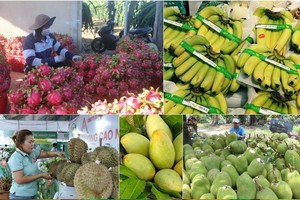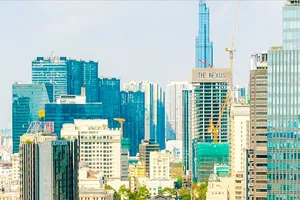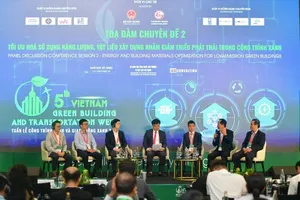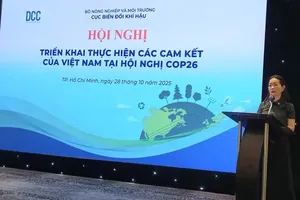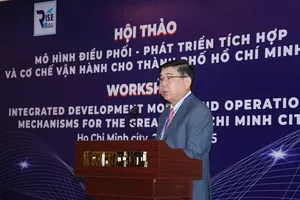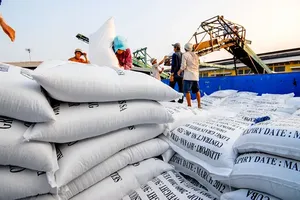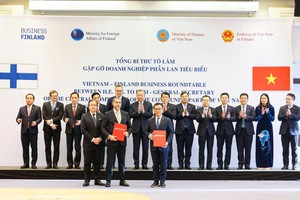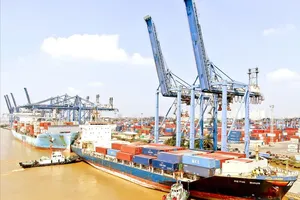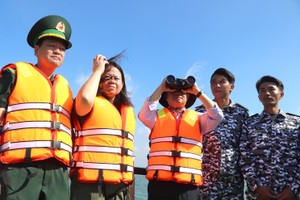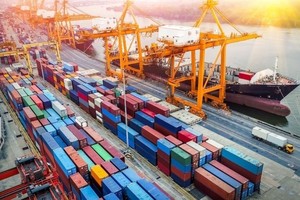
Global tech giant Qualcomm has just launched an Artificial Intelligence (AI) Research & Development (R&D) center in Vietnam, which is expected to help position Vietnam as a leading AI R&D hub in the region and the world.
Deputy Minister of Finance, Le Tan Can called this event a “significant milestone” that marks a new phase of cooperation between Qualcomm and Vietnam in the field of AI. He urged Qualcomm to continue advancing groundbreaking AI research in Vietnam and strengthen cooperation with the Vietnam National Innovation Centre (NIC) to help develop the country’s AI workforce.
Qualcomm’s R&D center project was also highlighted by Minister of Finance Nguyen Van Thang as a bright spot in foreign investment attraction in the first five months of the year. In a report to the National Assembly ahead of the Q&A session related to finance at the 15th legislature’s 9th session, Thang noted that Vietnam attracted over US$18.4 billion in registered FDI during this period, up 66.2 percent year-on-year.
More importantly, foreign investment is increasingly being steered toward key sectors such as processing, manufacturing, digital transformation, and artificial intelligence, he said.
Many major companies from the US and the European Union (EU) are pouring more investment and building supply chains in Vietnam, he stressed, noting that this reflects Vietnam’s growing importance in global supply chains.
Beyond the R&D center project, Qualcomm has other plans in Vietnam. At a meeting with Party General Secretary To Lam, Alex Rogers, Head of Global Affairs at Qualcomm, affirmed that the company will continue to invest in Vietnam, particularly by nurturing Vietnamese talents to contribute to global AI development, thereby supporting Vietnam’s development and strengthening Vietnam – US relations.
AI and semiconductors are key sectors Vietnam is prioritizing to attract investment, aiming to foster new growth drivers and pursue double-digit economic growth in the coming period.
Attracting FDI for development
Despite global investment challenges, foreign investment in Vietnam remains on an upward trend, with large-scale projects also making a comeback.
In its report on foreign investment attraction during the Jan – May period, the Foreign Investment Agency under the Ministry of Finance highlighted several large-scale projects that have been newly registered, and existing ones expanded their investments in Vietnam.
The past five months marked the return of many large-scale real estate projects, totaling US$4.99 billion — double the amount recorded in the same period last year. This surge shows the strong appeal of the Vietnamese market. These developments also align with a recent assessment by Savills Vietnam, which pointed to growing opportunities to attract investment from the global ultra-wealthy.
Vietnam boasts opportunities to attract the global ultra-wealthy, thanks to its strategic location in Southeast Asia, rapid economic growth, stunning natural landscapes, a significantly improving living environment, and ample room for real estate investment growth, according to Matthew Powell, Director of Savills Hanoi.
Insiders said that attracting FDI into real estate is a positive driver for both the market and the broader economy. However, for Vietnam’s economy to accelerate more robustly in the coming period, the key lies in processing and manufacturing projects, especially those in cutting-edge industries such as semiconductors and AI.
In a report to the National Assembly, Thang underscored the importance of mobilizing foreign investment resources for development, while outlining both traditional and emerging growth drivers to support the goal of achieving over 8% economic growth this year.
He said that it is essential to promptly identify and address bottlenecks and recommendations related to major FDI projects; leverage task forces to provide close support and expedite investment procedures for these projects in order to speed up their implementation.
Thang also underlined the need to develop effective mechanisms for selectively attracting FDI and tapping into indirect investment flows and international investment funds, including providing direct financial support or infrastructure for high-potential sectors to create breakthroughs and new motivations for growth. He stressed the importance of creating the best possible conditions and encouraging enterprises to conduct R&D activities or engage in technology transfer in Vietnam.
To attract FDI and foster new growth drivers, a draft resolution on developing an international financial center has recently been submitted to the NA. Once completed, the center is expected to not only strengthen Vietnam’s integration into the global financial market but also attract foreign financial institutions and capitalize on shifting flows of international investment capital.
